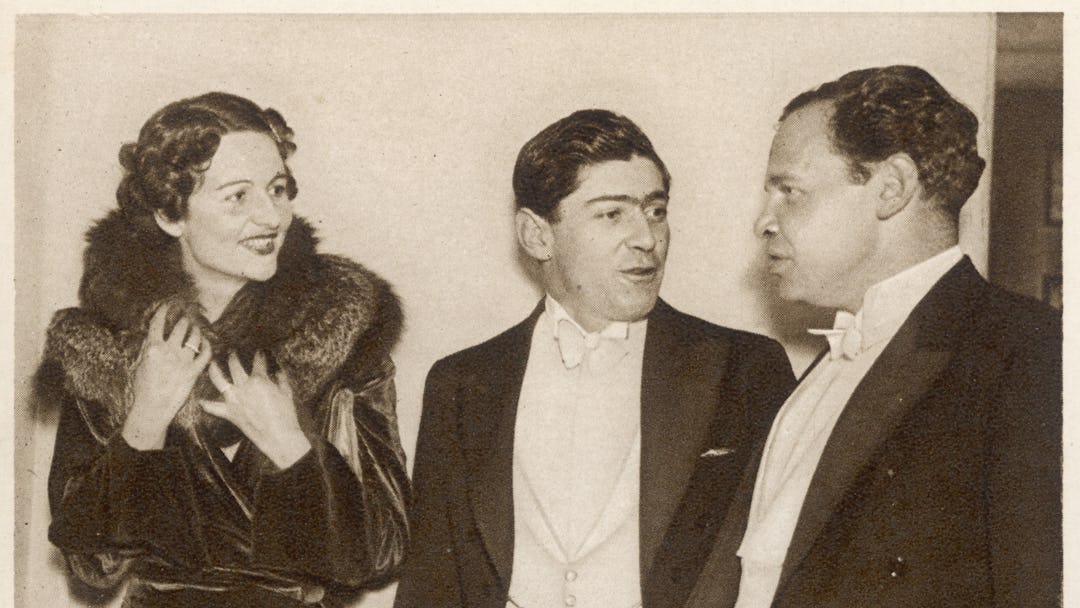Writing about the wealthy — especially those born into wealth, as opposed to those who earned it later in life — is a difficult task, unless you’re looking to essentially take the piss out of them, or put them through unfortunate adventures. Otherwise you risk crossing the populist lines that were drawn in fiction sometime after the world wars. Rich characters are easier targets, and it is often difficult to empathize with them; indeed, we’d rather see those with money and power fall and fail, not continue to succeed.
Nancy Mitford was — along with other British writers of her era, like P.G. Wodehouse and Evelyn Waugh — able to write stories about people of privilege, and laugh at them in a way that is not only timeless, but still relevant to a generation in love with Downton Abbey. In the first half of the 20th century, British old-money-aristocracy types were not just full of great stories and drama, but also really inadvertently funny. Now, thanks to Vintage’s release of three of Mitford’s early books, Highland Fling and a combined volume that contains both Christmas Pudding and Pigeon Pie, her work is again being given the attention it deserves.
Of course, if ever there were a writer to love by the old adage of “write what you know,” it was Mitford, one of the six well-known and often-talked-about Mitford sisters, children of David Freeman-Mitford, Second Baron Redesdale. Mitford was also a member of the famed Bright Young Things circle of hard-partying rich and aristocratic aesthetes that at times included Waugh, fellow author Anthony Powell, the painter Edward Burra, Edith Sitwell, and Mitford’s sister, Diana, whose beauty was tarnished by her ugly support for Adolf Hitler and fascism during the Second World War. (She wasn’t just a supporter, but an actual acquaintance of Adolf Hitler, a revered guest at Diana’s second wedding in 1936 — which was held at Joseph Goebbels’ house).
The political beliefs of the Mitford sisters are among the most fascinating aspects of the family: Diana and Unity were Hitler supporters, while Jessica was a communist, and Nancy saw herself a moderate socialist. It is Nancy and Jessica (who was a great writer and journalist in her own right) whose works and legacies will live on, while the other Mitford names will forever carry the ugly stain of fascism that has torn apart much stronger legacies.
“Sophia’s war began in that border town. She felt rather shivery when she saw the poster, and said to Rawlings, “Did you see?” and Rawlings said, “Yes, m’lady, I did.”
That scene in Pigeon Pie where Sophia Garfield cruises in her Rolls-Royce through “one of those grey and nondescript towns on the border between England and Scotland,” realizing that war has broken out, neatly sums up for me why Mitford and her work should be read as a direct link between the aforementioned Wodehouse and Waugh. It has the same absurd hijinks you’d expect from a Wooster and Jeeves story, but also the lyrical beauty of Waugh’s novels. And Mitford’s tone manages to convey how the author — not only a rich woman, but one whose family was fractured along political lines — reacted to the war in its early days.
Mitford also had an incredibly observant eye for what was going on around her, and had plenty of material to work with, no doubt thanks to her wealthy and hip friends. The things her characters say at some moments read like the voices of Woody Allen’s snobby urbanite characters filtered through an English Edith Wharton. In one standout line from Highland Fling, the painter Albert is talking to the close-minded Lady Prague: “England is hardly a very good place for a serious artist, is it? One is not exactly encouraged to use one’s brain over here, you know. When I arrived from Paris this last time they would not even leave me my own copy of Ulysses. Things have come to a pretty pass when it is impossible to get decent literature to read.”
Mitford’s writing is alive with awareness of both of her own place in life and the mannerisms, eccentricities, and contradictions of other English upper-class types. Reading her books today, it’s clear that by looking quite closely in the mirror, she was able to create portraits of characters that still resonate.
